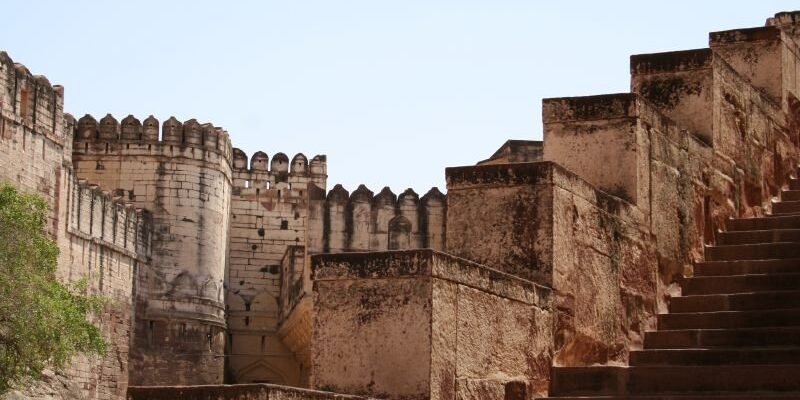Mehrangarh Fort
Mehrangarh One of the most magnificent and imposing forts in India, this fort rises perpendicular to the cliff, which itself rises 120 meters above Jodhpur. The crenellated wall ranges in height from 6 m to 36 m, and the rock on which the fort stands was used as the building material; hence the fort merges with its base. Still run by the Jodhpur royal family, Mehrangarh Fort is full of stories and legends.
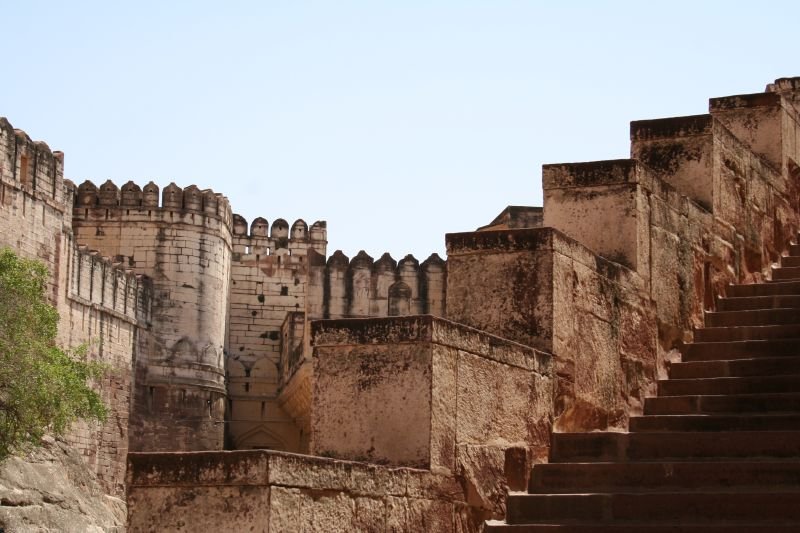
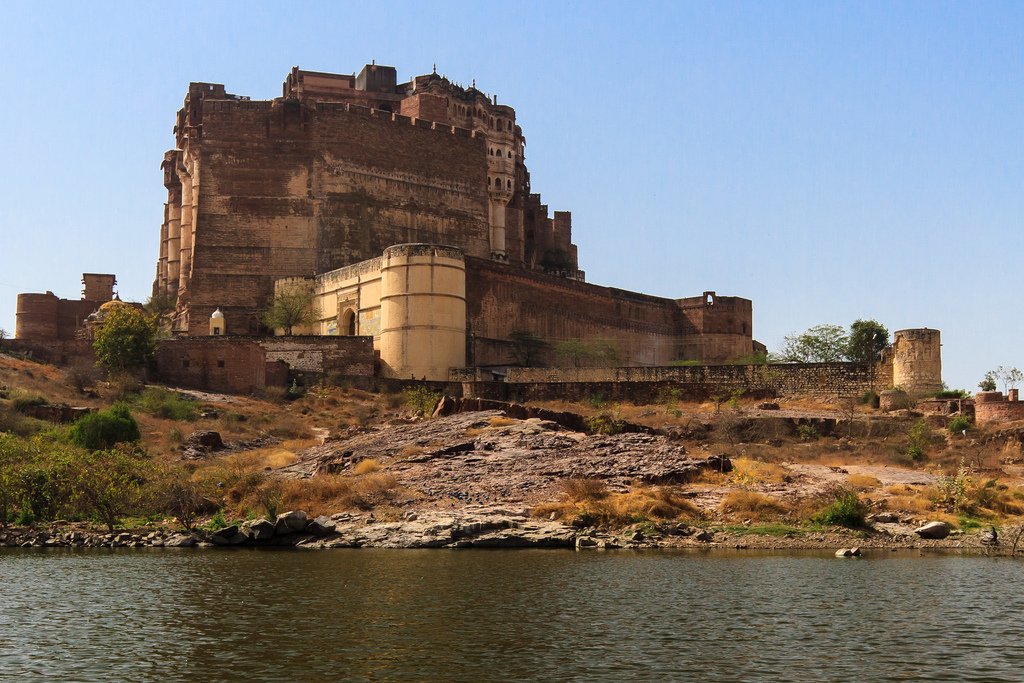
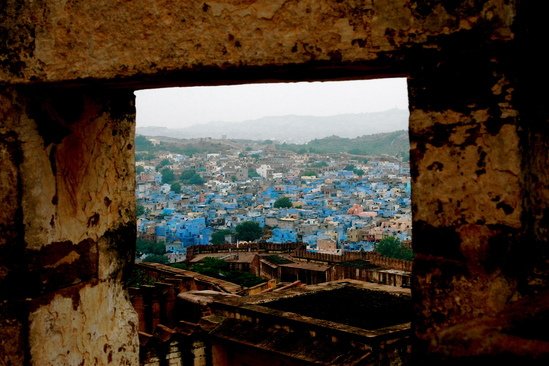
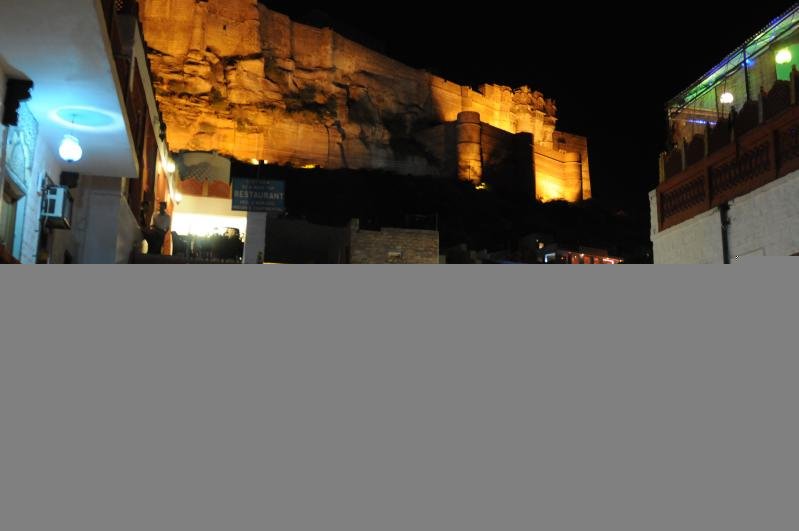
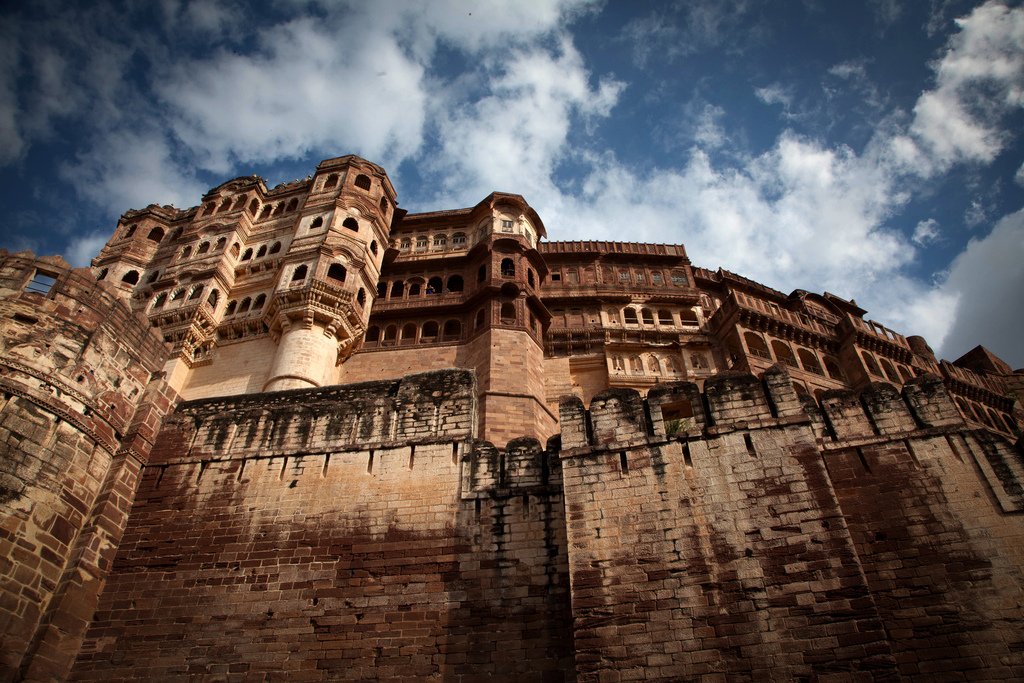
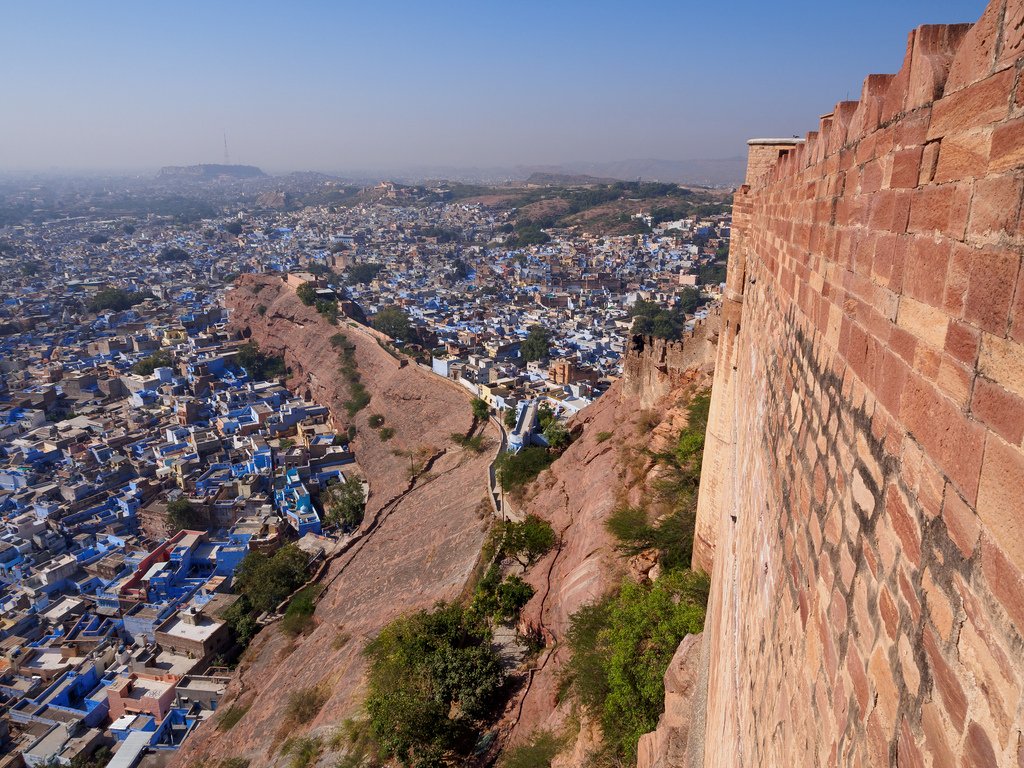
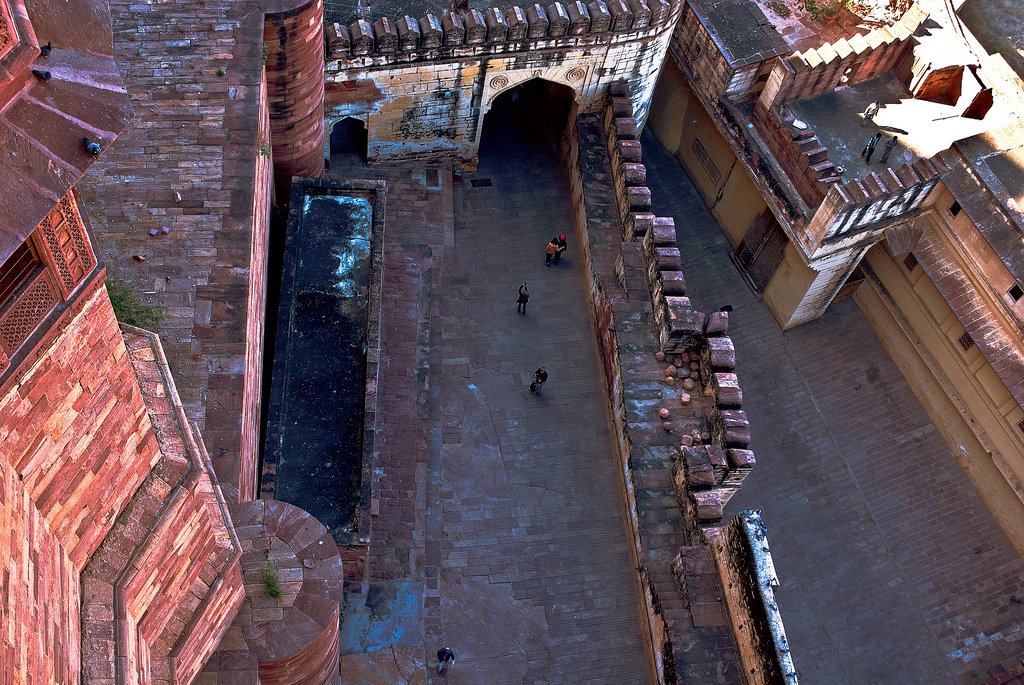
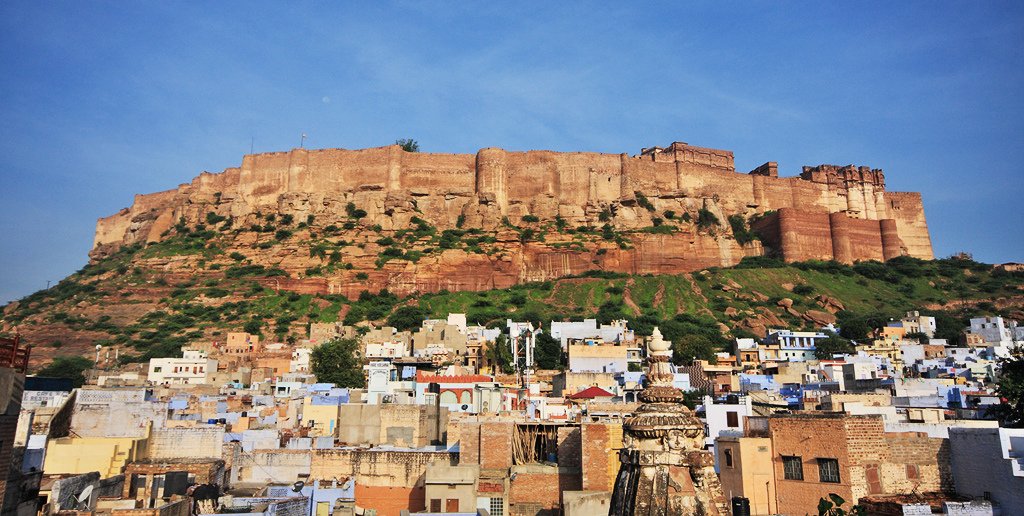
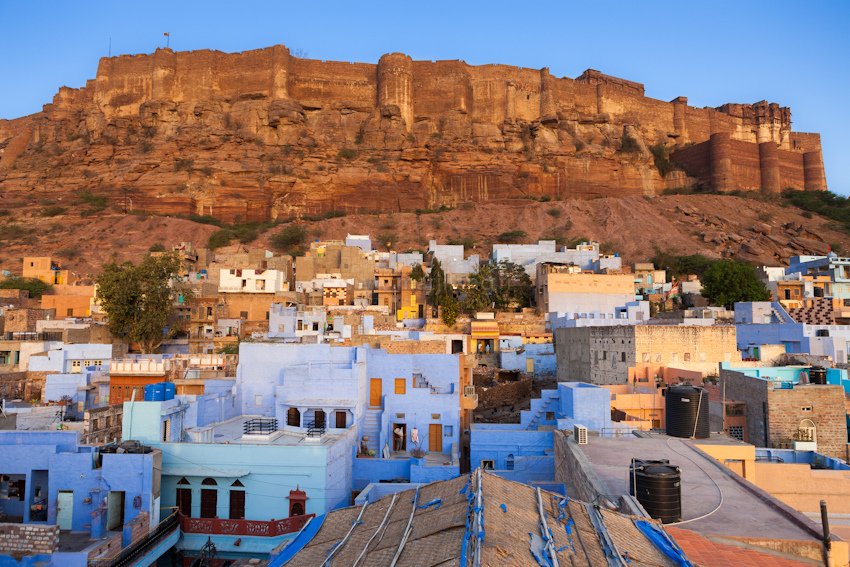
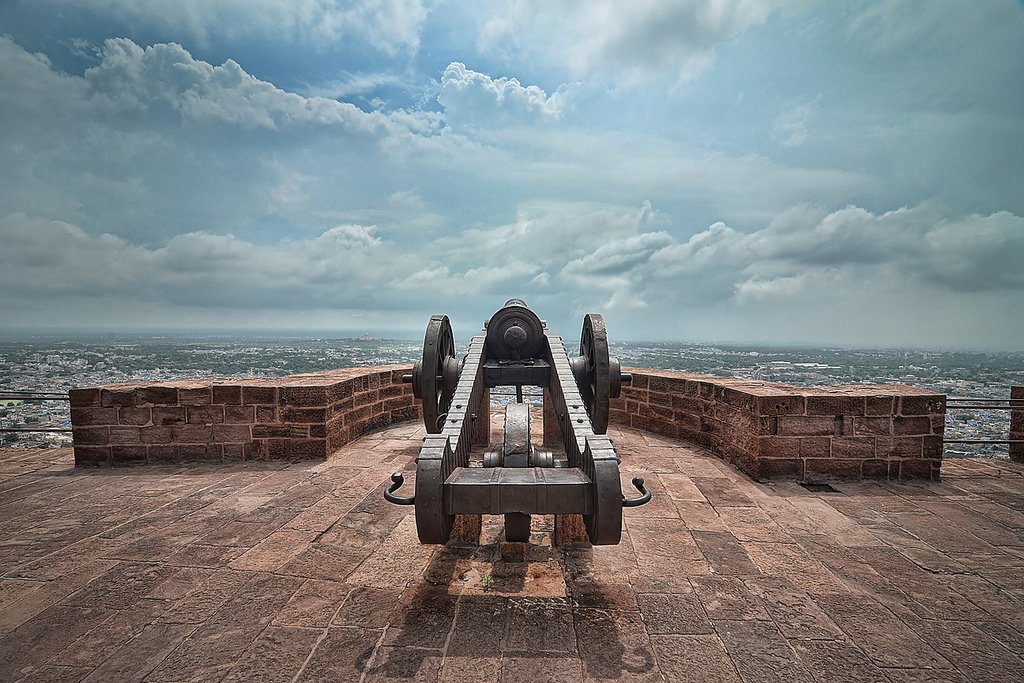
Video: Mehrangarh Fort
General Information
www.mehrangarh.org;museum admission adults/seniors and students,including photo and audio guide Rs. 300/250,video Rs. 200; 9.00-17.30
Mehrangarh Fort was built in the 15th century by the Rajputs of the Rathore clan, who had always been noted for their belligerence towards the Mughals and other rival Rajput clans. Akbar decided it was better to get them on his side than to try to force them to accept Islam. When he married the sister of the Maharaja of Jodhpur named Jodha Bhai (for whom he had built a huge palace in Fatehpur Sikri), there were no questions about her conversion to Islam.
.To get to the main entrance to Mehrangarh, the northeast gate of Jaipol, you have to climb 300 meters from the Hill View Guesthouse in the old town. Or you can take an autorickshaw (about Rs 80) along the winding 5-km road. For a guided tour with an audio guide in one of several languages included in the ticket price, you must leave a deposit of your passport, credit/debit card or Rs. 2000.
.Near the eastern gate of the fort, you will see tombstones where soldiers fell defending the fort and cannonball marks showing the great efforts made by the Maharaja of Jaipur to capture Princess Krishna Kumari against her will. During the battle, she committed suicide. The fort boasts most of all a battery of intimidating looking howitzers and several guns mounted on the ramparts surrounding it.
.From here, you can get a great view of the famous blue and white city. It is believed that the blue color was usually used to paint the houses belonging to the Brahmanas, the priestly caste, but it is more likely that this paint was used to protect the houses from termites, as it contains copper sulfate, which destroys insects.
.
Behind the ramparts and gates with sharp iron spikes to keep them from being rammed by elephants is a very beautiful residential palace. Its royalty is most evident in the balconies of the Royal Harem (zenana), equipped with screens (jali), which are thin carved stone lattices. The palace museum has a collection of colorful artifacts that provide an insight into the daily lives of those who lived there. There are sumptuously embroidered elephant capes, as well as cradles for babies and palanquins for ladies.
.
The palanquin, a chair-shaped stretcher on a pole, was either completely closed so that an unmarried girl sitting in it would be invisible, or had an opening that allowed her to see the street – and be seen by others – if the woman was married.
.At the Loha Pol exit, you will see evidence of the negative side of the maharaja’s wife’s life – 15 scarlet handprints on the wall – sati – widows who, keeping centuries-old traditions alive, threw themselves into their husbands’ funeral pyres, ritually sacrificing themselves.
.Beyond Loha Pol are a cafe and the Surajpol gate, which leads to the museum. After the museum, head to the panoramic ramparts, which house some impressive antique artillery.
.
Mehrangarh Museum
This series of beautiful courtyards and halls with stone latticework on the windows, which was formerly the fort palace of Mehrangarh Fort, is a superb example of Rajput architecture. The carvings here are so fine that it sometimes looks as if the building is made of sandalwood rather than sandstone.
.The galleries around Shringar Chowk (Shringar Chowk; Court of Anointing) have India’s finest collection of elephant riding seats and royal palanquins.
.In one of the two galleries next to the Daulat Khana Chowk are textiles, paintings, manuscripts, headdresses and a curved sword of Mughal Emperor Akbar; the other gallery displays weapons. On the second floor is a gallery of miniatures, including elaborate works in the tradition of the Marwar school and beautiful miniatures from the Phul Mahal (Palace of Flowers), built in the 18th century. The wall paintings of the palace, done in the 19th century, depict 36 moods of classical raga and portraits of monarchs. The artist created them over 10 years using a curious cocktail of gold leaf, glue and cow urine.
.Takhat Vilas was the bedroom of Maharaja Takhat Singh (1843-1873), who had 30 wives and many concubines. Its beautiful ceiling is hung with Christmas toys. You will then enter the vast harem, whose beautiful latticed windows (through which the women could watch what was happening in the courtyards) are said to have been decorated in 250 different styles. Here you’ll find the Cradle Gallery, which displays cradles for royal babies, and see the Moti Mahal; the Pearl Palace, built in the 17th century and decorated with magnificent colorful stained glass windows, which served as the main hall for official meetings and receptions.
.